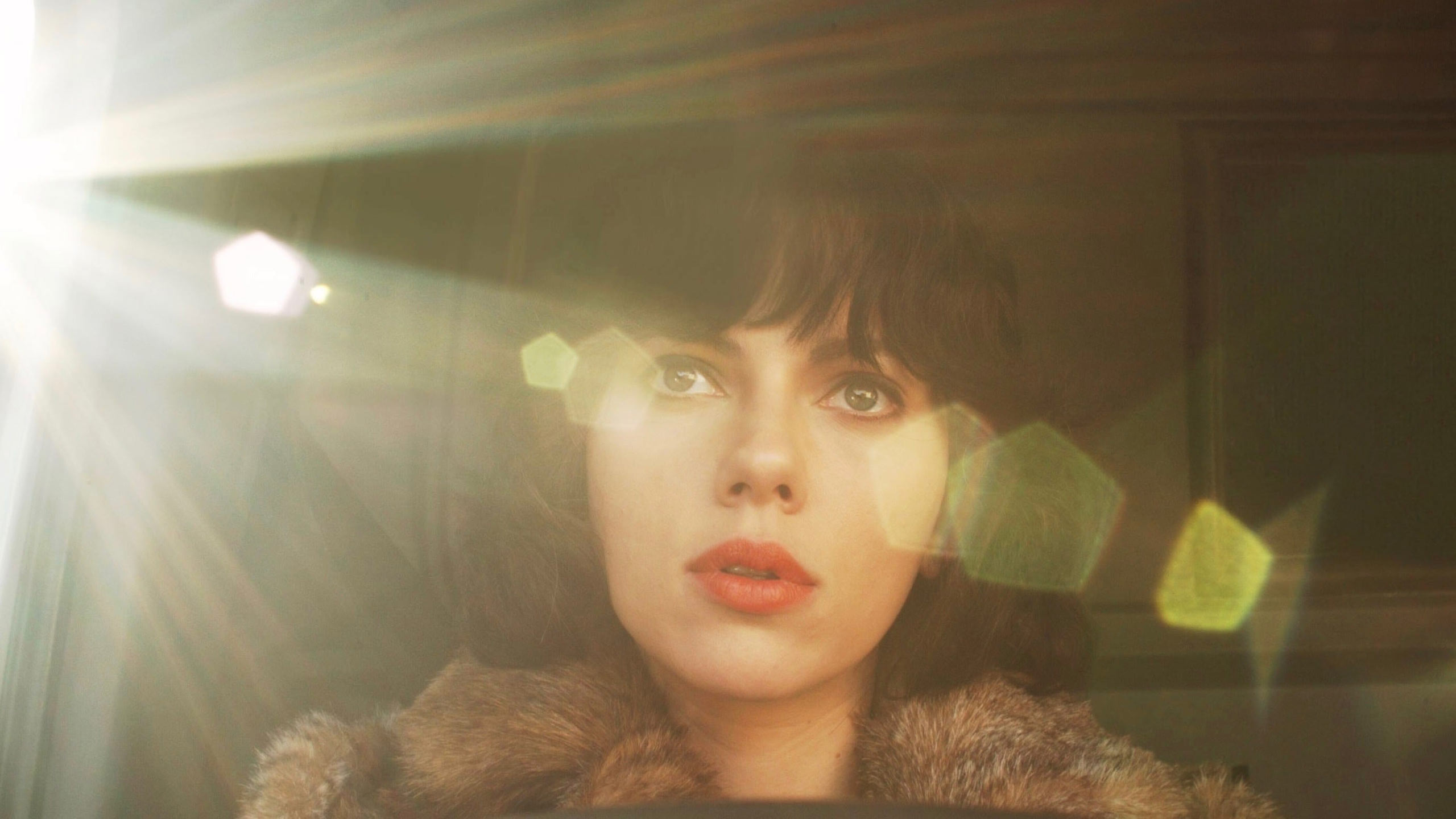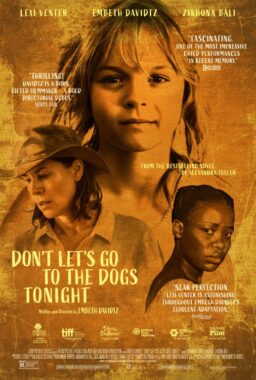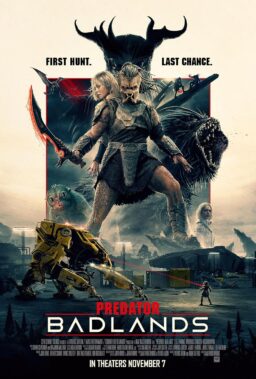“Under the Skin” revolves around an unnamed alien creature played by Scarlett Johannsson roaming around the streets of Glasgow in Scotland observing, mimicking, and devouring human beings. For the sake of comprehension, this analysis will refer to this character as ‘The Woman,’ and the motorcyclist helping her out with her mission as, ‘The Biker’. The Woman with the help of The Biker, embarks on a hunting spree. Gradually, she becomes aware of the vulnerability of human beings and attempts to become human herself.
Upon its release, Jonathan Glazer’s “Under the Skin” garnered wide critical acclaim for its fascinating alien perspective on human behavior. It challenged established conceptions of human identity and made us ponder on the possibility that aliens in human form might be walking amongst us. As The Woman watches roaming pedestrians around her, we begin to observe our own race as like we are in fact the aliens. By making the familiar appear unfamiliar, the spectator finds himself identifying and empathizing with otherness. In doing so, the film invites viewer to re-evaluate the way we view, observe, and treat humans and nonhumans. “Under the Skin” is one of the few examples in cinema history where human becomes other, and the monstrous-feminine becomes a vulnerable victim.
“Under the Skin” downgrades humanity from an illusion of superiority back to its rightful place, re-establishing human beings as just one of the many natural species inhabiting this planet. By allowing the spectator to become an observer to this shift in power dynamic, the film rejects the notion that humans have the right to place themselves above nonhumans. The film criticizes how humans perceive beauty, and in this analysis, I’ll discuss how by looking beneath the surface or ‘under the skin’ of the film, we begin to discover its internal transformations. All of this relates to the idea of becoming, not just in terms of characters becoming and transforming from one being to another, but the film itself playing with conventional expectations by starting off as a one thing and then becoming something else entirely.
Throughout the first act of the film, The Woman seduces men, by luring them into a black otherworldly room, centering the duality between sex and death. First, The Woman tactfully singles out men walking on the sidewalk. Most of the time, she struggles to even understands what they are saying due to their thick Scottish accents. In one scene, we see her eyes scanning the streets of Glasgow. The film cuts to two men talking outside a bar. When we cut back to The Woman, it is clear that she disregards them, and her eyes continue scanning for prey. Pedestrians cross the street in a hurry, most of them are in groups. She stops her van and finds a lone pedestrian, who proceeds to give her directions. She steers the conversation elsewhere, by asking him about his tattoo. He tells her that it’s his name Andy. Off-screen, the sound of a woman can be heard calling on him. As soon as this happens, The Woman abandons her mission, and moves on to the next victim. This time it works. They engage in flirtations and small talk; it becomes unclear who is picking up whom. To capture the naturalism of the hunt, the filmmakers used hidden cameras. The bystanders had no idea that they were being filmed, which gives the film a raw and ominous atmosphere. These scenes blur the line between fiction and documentary, the same way the film attempts to collapse the boundaries between human and nonhuman.

After the van sequence, the film cuts to a shot of The Woman standing in front of a building looking back at her clueless prey. It is important to notice, she’s wearing a fur coat, a distinct reminder of the industrial cruelty of animal factory farms, where the skin, leather and fur of rabbits, mink, foxes, as well as countless species are processed to be sold as luxury fashion items. By envisioning a world where the consumers get consumed, the film calls for a reconceptualization of human and nonhuman relationships. “Under the Skin” denies human exceptionalism and supremacy. It plainly rejects humans as superior beings that rest higher on the evolutionary tree, and it does so by giving viewers a horrific taste of what it would be like to be processed like industrial meat by nonhumans. Like sheep being herded into the slaughterhouse, as soon as the men walk into the black space, they find themselves moving towards their own demise. Man, who once stood on top of the food chain, finds himself submerged into the depth of a black liquid void. The first time I saw these scenes, I couldn’t help but feel conflicting emotions of terror and awe as we witness unsuspecting victim succumbed to the extraterrestrial’s sinister strategy. The unsettling sight of a human form unraveling into nothingness is a sight that will forever be etched in my memory.
One of the first things The Woman realizes when she walks amongst the humans, is how much the human world is obsessed with superficial beauty. In one sequence, the camera follows The Woman into a crowded mall. People are walking around carrying shopping bags filled with clothes. The film cuts to The Woman picking out a fur coat, before we see her inspecting a cardigan, and black boots. This is followed by a montage taking place in the make-up section of a cosmetics store. The Woman stands in front of racks of countless different shades of a lipstick. A random woman sits still, while another woman applies skin foundation on her cheeks. Skin cream is being massaged into the arms of a third shopper. Another woman tests out a specific eye shadow. The film then cuts to a middle-aged woman looking into the mirror studying her looks, and back to The Woman who is now sitting in her van, applying lipstick while looking at a compact mirror. The Woman uses her exterior beauty as a sexual-desire tactic to draw men into her world and devour what is under their skin. Men follow their sexual desire and blind attraction to beauty, till everything gets sucked out of their bodies, and they are only left with the one thing they desire most, the outer shell of their bodies, the skin.
The opening scene of “Under the Skin” reveals the assembling of organs into a body, but it can also be seen as a sequence of creation itself. First there was darkness, then there was light. In the beginning, the screen is black, then a small light appears at the center. Gradually, it increases in size. We cut to a shot of what appears like celestial spheres lined up next to that light. The sound of letters can be heard being uttered by The Woman- language is becoming. After that, it is revealed that we are witnessing black matter forming an eyeball. Both alien and human organs merge giving birth to The Woman. Through the film, her identity is in constant transformation, always becoming and evolving into another.

At first, The Woman is portrayed as a gendered monster similar to classical mythology of the female as the monstrous-feminine. Just like The Medusa and her ‘evil eye,’ men unfortunate to follow her would suffer a terrifying death. The Woman appears cold and emotionless in her hunt for human flesh. When she talks to a man in a wetsuit by the beach, the spectator is already aware of what she is planning to do with him. Their conversation gets disrupted when he notices someone struggling to swim in the distance. The man does not get distracted by The Woman’s advances and runs towards a couple trying to rescue their drowning dog. Shots of huge waves overtaking the couple as they swim serve as a reminder of the fragility of man in the midst of mother nature. The film then cuts back to The Woman, observing this incident from a distance. She sees the man who is now washed off on the shore, exhausted and helpless, and she moves in for the kill. The same sinister tune we hear during the hunting scenes is playing in the background.
The Woman picks up a rock and smashes his head with it. As she pulls his body in, the spectator notices a baby crying on the pebbly beach in the foreground. The film cuts to The Woman driving her car, and then cuts to the backseat, revealing the unconscious man in the wetsuit. It is now night-time, and The Biker is seen at the same beach, cleaning up behind her, erasing traces of the man’s existence. It is insinuated that the couple have drowned along with their dog, because as The Biker picks up random items on the shore, the baby can be seen, alone and crying. The film cuts to a close-up shot of the child struggling to get up, while the sound of crashing waves takes over the soundscape. It is one of the film’s most disturbing and gut-wrenching sequences. The Woman and The Biker’s unsympathetic gaze towards the baby is extremely unsettling. The beings are shown operating ruthlessly without any remorse or empathy whatsoever. Gradually, The Woman becomes more emotional, and empathetic to creaturely vulnerability. It happens subtly at key moments throughout the film.
The first time, the aliens show their capability of having emotions is at the very beginning. In a white room, The Woman’s predecessor is lying on the floor. She stares at The Woman, completely frozen, as if she’s paralyzed. A tear slides down from the side of her eye. The Woman undresses her and wears her clothes. The scene transitions to an extreme close-up of the ant on her finger, and The Woman appears to connect more with the insect than with the violated woman collapsed on the floor. Eventually The Woman gets exposed to human kindness. It comes in the form of strangers helping her get back to her feet after she falls. However, the defining moment that makes her abandon her mission, and feel compassion towards humanity comes after her encounter with a man who suffers from neurofibromatosis. The Woman picks him up at night, because that is when he tries to shop to avoid interactions with people. The man seems to be caught off guard by her compliments. The Woman looks surprised that he does not act like the men that came in the van before him. “You’re uncomfortable”, she tells him. To which he replies, “No. Just want to go to Tesco’s.” They have an intimate conversation afterwards. The man seems shy, admitting that he does not remember the last time he touched anyone, and they proceed to touch hands. As she driver him back to her place, the film cuts to a close-up shot of him pinching his own hand. He’s nervous, in disbelief and probably feeling very vulnerable. We see the first shot of The Woman as her true self, a black figure. After the man sinks in the black liquid, The Woman can be seen looking at a mirror. She walks forward from the shadows and looks into her eyes. The film then cuts to a closeup shot of a trapped fly struggling to make it out the window. We cut to an extreme closeup of The Woman’s eye noticing the fly’s vulnerable position. Something inside her changes. We see The Woman opening a door, setting free her last victim. This sequence marks the exact midpoint of the film’s runtime. In fact, one could say that Under the Skin unconventionally only has two acts. The first act is composed of the monstrous feminine hunting her prey, and the second act revolves around a much more vulnerable, scared, confused, and less verbal version of The Woman roaming around the city, while The Biker tries to find her. The Woman is now on the run, trying to avoid the same fate as her predecessor. In a sense, the character and the film undergo a becoming.

During the first act of “Under the Skin,” time is subordinated to action or movement, while in the second act, movement and action are subordinated to the flow of time. In the first act, The Woman has a clear mission, she routinely picks up men, seduces them, and takes them back to her den. In the second act, The Woman thinks rather than acts. The film shows her confused, disoriented, and letting go to the flow of time. She explores the pleasures of life with a newfound curiosity; she tries food, listens to music, and engages in sexual intercourse with a stranger. The Woman finds herself unable to act and react in a direct and an immediate manner. She is left to explore, with no prospect of success, to roam, to linger. In essence, the character does not act without a self-awareness of her actions.
“Under the Skin” ends with The Woman sleeping in a shed in the woods. The film cuts to a dissolve of her against a landscape of nature, as if she has become one with nature. By embodying the other, the image of The Woman is no longer separate from her environment. She becomes an integral part of the interconnected unity of all things. This beautiful shot gets disrupted by a man feeling her up. The Woman, now vulnerable to the world around her, runs away in fear. The predator eventually catches up and attempts to rape her. Again, that sinister ‘hunting’ tune can be heard in the background, only this time, the roles are reversed. The hunter becomes the hunted. After the Woman kicks the man off her, and walks off, the camera rotates around the man who is frozen in shock, revealing The Woman. While trying to rip off her clothes, he ripped part of her skin, revealing what is under the skin, black matter. The man runs off into the woods, and the film cuts to The Woman sitting on her knees as she takes off her human skin. The Woman, now a black ant-like figure, looks at her human face.
“Under the Skin” starts with the assembling of the organs and ends with the dismantling of organs. With this endless becoming, one identity collapses, creating and giving birth to another self. Suddenly, gasoline gets spilled all over her body, we see a trail of fire that catches up to her, and she is set ablaze. The color white seems to appear, whenever there is a birth depicted on screen. Black appears whenever a death occurs. However, when the now burning Woman falls and drops into a snowy field, the camera cuts to a shot of black smoke penetrating the white sky. Instead of cutting to a black screen, the film cuts to a white sky as snowflakes fall towards the cameras point of view. This is not a death, but a rebirth of sorts, the Woman is finally set free, becoming one with nature.











